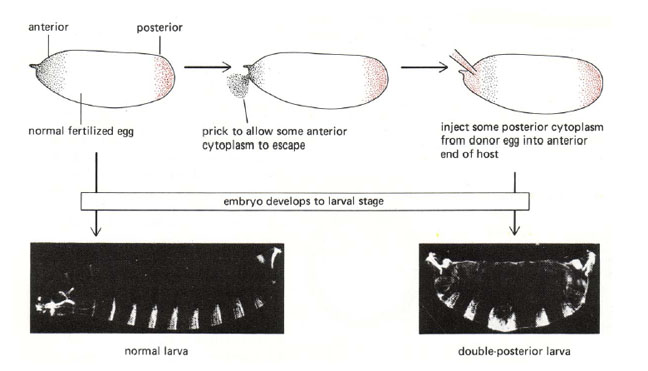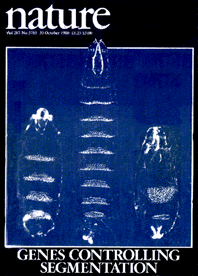
Lecture 14
Drosophila Genetics
Recommended reading:
1. Martinez Arias and Stewart. "Molecular principles of animal development". Chapter 9, pages 274-281.
2. Griffiths et al. "Genetic Analysis" Chapter 25 (6th edition). Developmental genetics: Cell fate and pattern formation.
3. Nusslein-Volhard C, Wieschaus E. Mutations affecting segment number and polarity in Drosophila. Nature 1980 Oct 30;287(5785):795-801.

Introduction:
The publication of a single paper in Nature in 1980, entitled "Mutations Affecting Segment Number and Polarity in Drosophila," revolutionized the field of developmental genetics. Prior to this, most developmental biologists assumed that development was so complex that a genetic approach would not be fruitful. The authors, Christiane Nüsslein-Volhard and Eric Wieschaus, realizing that it would be worthwhile to do a systematic genetic screen for developmental mutants, searched for mutant genes that affect the formation of segments in the Drosophila embryo. In this milestone paper, they identified an initial set of 15 embryonic lethal mutants. More importantly, they categorized the mutants as representing three different types of genes, which they believed controlled an increasingly complex organization of the organism. Since the publication of this article, Nüsslein-Volhard and Wieschaus (along with Edward Lewis) have been awarded the 1995 Nobel Prize for Physiology/Medicine.
To obtain mutations in most or all genes in the genome, additional mutagenesis screens were performed and those results were published in an additional three papers.

Saturation mutagenesis:
Because flies are diploid and most mutations are recessive, the mutagenesis scheme employed by Nüsslein-Volhard and Wieschaus involved establishing inbred lines from single individuals carrying mutagenized chromosomes. In two generations this crossing scheme produced homozygous flies whose development was compared with their heterozygous siblings.
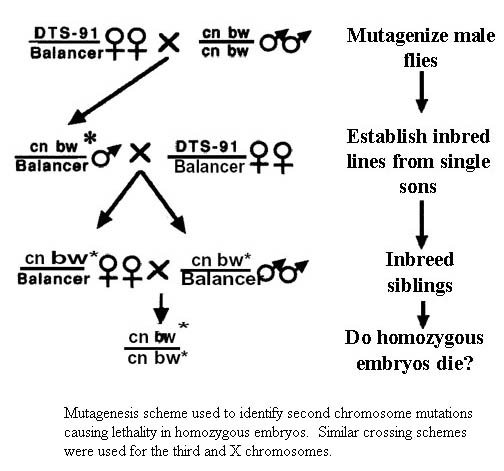

Nature of the mutations:
In all species, many of the gene products present in the embryo are supplied by the mother during oogenesis. The genes encoding these products are called the maternal-effect genes and are required for embryogenesis before the zygotic genome becomes active. In the mutagenesis screen outlined above, maternal-effect genes were not detected. Instead, the 139 genes identified represent only those genes whose products are supplied by the zygotic genome, known as the zygotic genes.
Perhaps one of the greatest outcomes of these genetic screens was that a number of newly identified genes were grouped together on the basis of their mutant phenotype.

Lodish et al. Molecular Cell Biology.
Overview of Gene Activity in Drosophila Development
1. Establishment of primary axes
Maternal-effect genes: Dorsal/Ventral requires approximately 20 genes
Anterior/Posterior requires approximately 50 genes
Anterior-Posterior Axis
2. Establishment of segments
Maternal-effect and zygotic genes:
Gap: define regions of the embryo (maternal and zygotic)
Pair-rule: regulated by gap genes, define 2 segment blocks (zygotic)
Segment-polarity: define A or P compartments of segments (zygotic)
3. Establishment of segment identities
Homeotic genes.
Dorsal-Ventral Axis
4. Establishment of germ layers and subdivisions: mesoderm, neural ectoderm and dorsal ectoderm.
Zygotic genes.
Establishment of Maternal Gradients
The genes responsible for anterior-posterior axis formation were identified in the mutagenesis screens mentioned above. Maternal effect mutations that caused the absence of head structures, the absence of the acron and telson, and the absence of posterior structures were recovered, suggesting that the mother specified the A/P axis. The following crosses are diagnostic of maternal-effect genes:
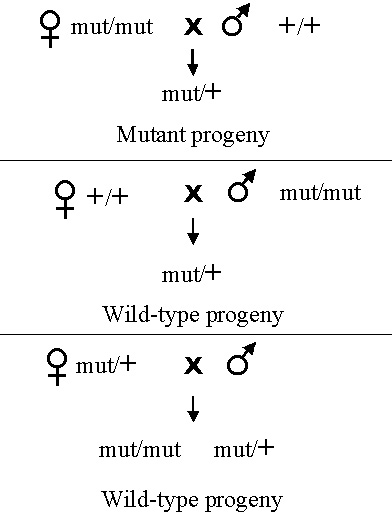
The three types of maternal-effect genes.
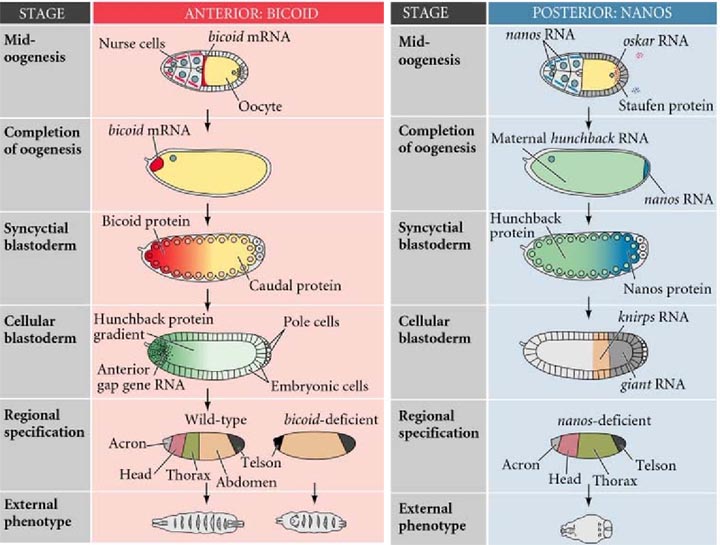
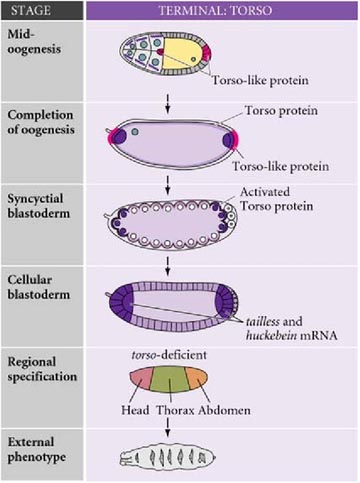
Proof of maternal gradients:
1. Localization Experiments

2. Gain-of-function experiments.
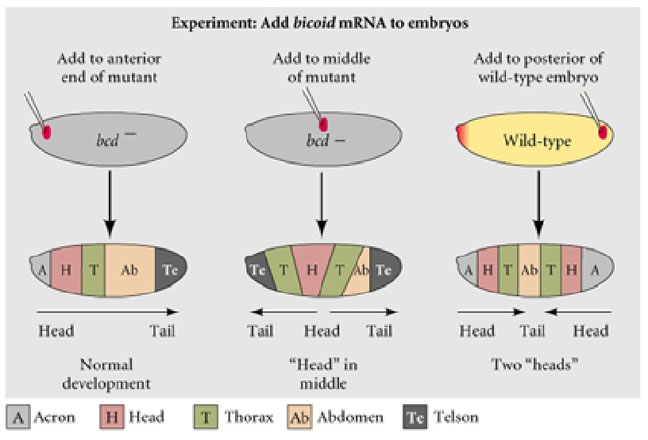
Adapted from Nusslein-Volhard, Fronhofer and Lehmann. Science 238, 1987, 1679. Taken from Lodish et al. Molecular Cell Biology.
